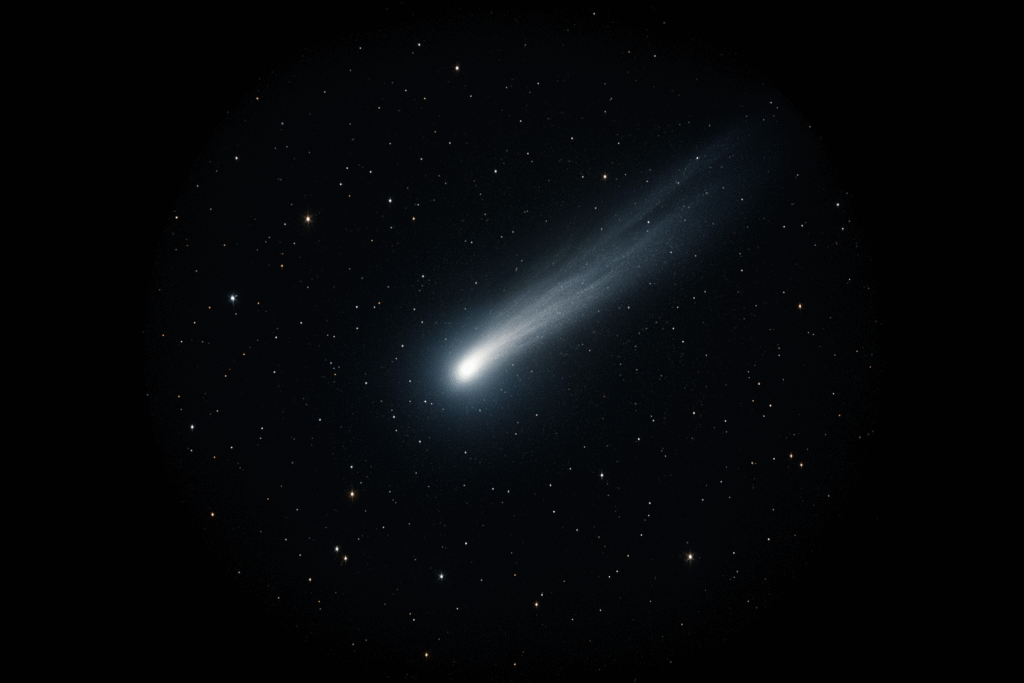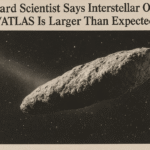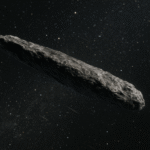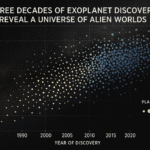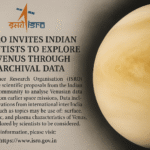By Harshit | 6 October 2025 | Cambridge, USA | 09:30 AM EDT
The interstellar comet 3I/ATLAS, only the third confirmed object from beyond our solar system, is drawing increasing attention from astronomers as it travels deeper into the inner solar system. Classified as interstellar due to the hyperbolic shape of its orbit, the comet represents a rare opportunity to study material forged outside the Sun’s planetary family.
A Rare Visitor
3I/ATLAS was first detected by NASA telescopes on July 1, 2025, and was quickly identified as an interstellar object based on its unusual trajectory. Unlike comets native to the solar system, which follow elliptical orbits around the Sun, interstellar objects have hyperbolic paths that reveal they are not gravitationally bound to our star.
Its discovery marks the third time astronomers have confirmed an interstellar visitor, following 1I/‘Oumuamua in 2017 and 2I/Borisov in 2019. Each new detection provides fresh insight into the dynamics of planetary systems beyond our own.
“This is like finding a cosmic message in a bottle,” said Harvard astrophysicist Avi Loeb. “Every interstellar object carries with it a record of the physical and chemical processes that shaped its original system.”
Determining Age and Origin
Recent studies have focused on narrowing down the age and potential birthplace of 3I/ATLAS. By analyzing its chemical composition and comparing its path to models of galactic motion, researchers hope to trace the comet back to its stellar nursery.
Preliminary results suggest that the comet could be billions of years old, originating from a distant star system in the Milky Way’s galactic disk. Its trajectory indicates that it may have been ejected during the early dynamical evolution of its home system, possibly after close encounters with giant planets.
Avi Loeb and his colleagues calculated that the comet’s mass could exceed 33 billion tons, with a nucleus spanning more than 3 miles (about 5 kilometers) in diameter — considerably larger than earlier estimates based on Hubble Space Telescope data.
Signs of Unusual Acceleration
Like ‘Oumuamua, 3I/ATLAS has displayed what scientists call “non-gravitational acceleration.” This subtle deviation from its expected path is believed to result from outgassing — jets of gas and dust released as sunlight heats the comet’s surface.
However, Loeb’s team argues that the level of acceleration measured is unusually low compared with the comet’s apparent shedding of material, raising questions about whether other processes might be at work. Such anomalies have fueled speculation about alternative explanations, including the controversial idea that 3I/ATLAS might be a fragment of alien technology.
“The hypothesis is that it could be a technological artifact,” Loeb wrote in a recent paper. While most astronomers consider this unlikely, the unusual properties of interstellar objects continue to challenge conventional models.
Close Encounters Ahead
Although 3I/ATLAS poses no threat to Earth, its trajectory will bring it unusually close to several planets. Over the coming months, it will pass near the orbits of Jupiter, Venus, and Mars, with its closest approach occurring roughly 1.67 million miles (2.7 million kilometers) from Mars.
Such encounters provide valuable opportunities for astronomers to monitor how solar radiation and planetary gravity influence the object’s behavior. Telescopes across the world and in orbit, including the James Webb Space Telescope, are expected to collect high-resolution data.
Scientific Potential
Studying 3I/ATLAS offers scientists a rare chance to examine the building blocks of planetary systems beyond the solar system. Its dust and gas composition could reveal clues about the prevalence of certain elements in other star systems, helping refine models of planet formation.
“This object is a time capsule,” said Jean Schneider, an astronomer at the Paris Observatory. “It may help us understand how common solar system-like environments are in the galaxy.”
With only three confirmed interstellar visitors to date, each detection challenges assumptions about how often such bodies should be encountered. Models suggest astronomers should have already seen many more. The rarity of discovery underscores both the limits of current technology and the unique nature of 3I/ATLAS.
Looking Forward
As the comet barrels toward the inner solar system, astronomers are racing to capture as much data as possible before it departs forever. Unlike comets bound to the Sun, 3I/ATLAS will never return once it slingshots back into interstellar space.
For now, the focus remains on understanding its composition, trajectory, and possible origin. Whether it is an ordinary comet from a distant system or something more unusual, 3I/ATLAS represents an extraordinary scientific opportunity.
“Every interstellar object we study brings us closer to answering the question of how unique our solar system really is,” Loeb said.

